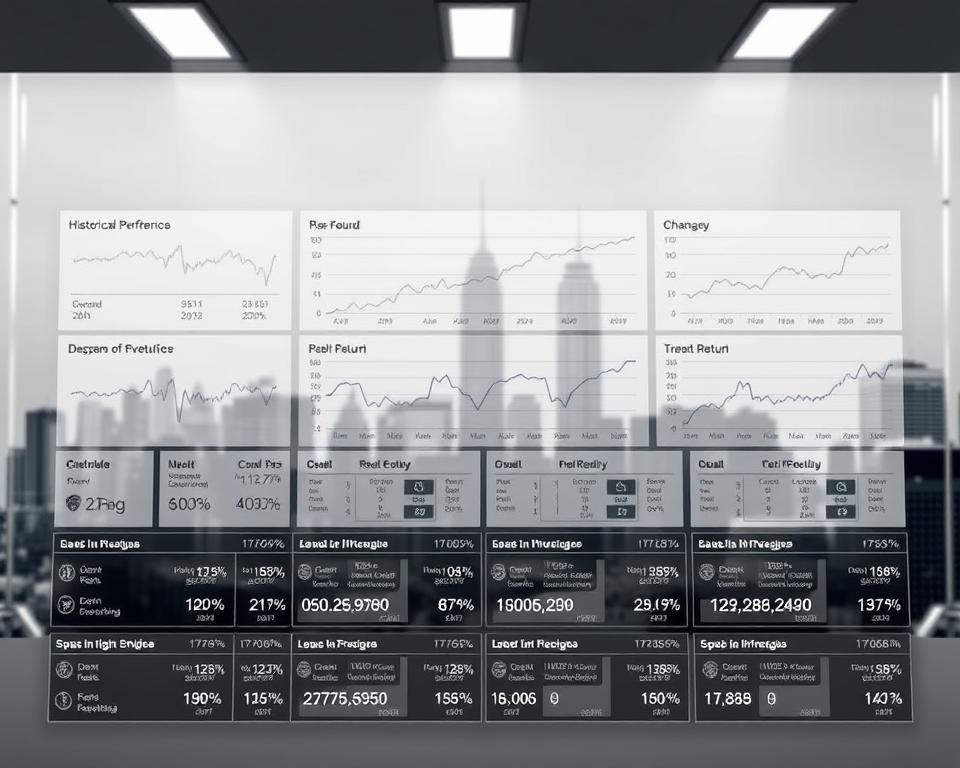Understanding What is CLO Equity – A Manual
The global market for collateralized loan obligations (CLOs) broke the $1 trillion barrier in 2021. This impressive escalation signals the rising significance of CLOs in the monetary sector. This manual seeks to deliver an in-depth understanding of the equity aspect of CLOs and the unique investment chances it offers. The equity component is pivotal for those aiming to diversify portfolios and boost returns.
We’ll delve into the essence of CLO equity, the structure of collateralized loan obligations, and various elements affecting these investments. Investors venturing into this what is CLO specialized market will uncover both the advantages and risks involved. They will also acquire knowledge of the key performance traits vital to their investment strategies.
Principal Learnings
- The international CLO market now tops $1 trillion, underlining the investment potential inherent in CLO equity.
- CLO equity is vital for portfolio diversification and maximizing returns.
- The structure of collateralized loan obligations is key to understanding their performance.
- Investors must assess various factors influencing CLO equity returns.
- This overview presents the potential pitfalls and gains inherent in CLO equity ventures.
An Introduction to CLO Equity
Collateralized Loan Obligations (CLOs) mark a notable shift in corporate finance. They embody a combination of debt and equity components, rendering them multifaceted. Typically, the equity portion—roughly 10%—attracts interest due to its potential for high returns. For both big and small investors, grasping CLO equity’s role in the larger market is crucial.
Such investments serve as a gateway to leveraged loans, combining risk with the possibility of substantial gains. Gaining expertise in this area often requires targeted education in CLO structures. Over time, these instruments evolve to accommodate various investor types and strategic approaches.
CLO Equity Explained
CLO equity is pivotal in corporate finance, representing the bottom layer of cash flows from collateralized loan obligations.
It gets its funds after all senior debts are paid. This investment is for those ready to embrace its risks for potentially high returns.
Core Definition and Main Characteristics
At its core, CLO equity means owning a piece of loan cash flows, offering an investment unlike most. It draws investor interest through the prospect of exceeding standard equity returns via leverage. Notable attributes include:
- The opportunity to receive leftover cash flows, denoting elevated risk coupled with higher reward possibilities.
- Positioned at the lower end of the capital structure, it demands sophisticated credit analysis.
- Potential for boosted returns, dependent on the success of the leveraged loans held in the CLO.
Evolution and Expansion of CLOs
Over a 30-year period, CLO equity has undergone significant expansion. It has grown from an insignificant segment to an industry valued at over $1.1 trillion. Important milestones feature:
- It began in the early 1990s and quickly attracted interest from institutional players.
- Growing investor interest in leveraged loans, which pushed CLO equity forward.
- Regulatory reforms have contributed to the market’s stability and enhanced its allure.
This evolution underscores steady advancement, highlighting an increased market maturity. Over years, aligning the interests of equity and debt holders has reinforced its structure, promising continued investment opportunities.
Understanding the Framework and Constituents of CLOs
Understanding CLOs requires an in-depth look at their configuration and primary features. Operating as special purpose vehicles, CLOs aggregate numerous leveraged loan assets. The complexity of their design critically influences investor engagement with these instruments.
Breaking Down CLO Mechanisms
A CLO’s structure is layered, guiding the cash flow and defining the investor’s risk. These layers, known as tranches, consist of debt and equity sections. The hierarchy of these tranches affects the order in which investors are paid. A CLO manager’s task is to supervise the asset pool, balancing potential risks and returns.

Debt vs. Equity Tranches in CLOs
Distinguishing between the debt and equity tranches is fundamental to understanding CLO investment dynamics. Investors favor debt tranches for their reliability in generating stable income. Conversely, equity tranches absorb initial losses, implying elevated risk yet the potential for superior returns. This distinction underscores the decisions investors face when allocating their resources in a CLO’s structure.
| Type of CLO Tranche | Degree of Risk | Yield Possibility | Consistency of Cash Flow |
|---|---|---|---|
| CLO Debt Tranche | Low to Moderate | Less | High |
| CLO Equity Tranche | Substantial | Enhanced | Variable |
Advantages of CLO Equity Investments
CLO equity offers a unique investment opportunity with high returns and steady cash flow potential. By choosing CLO equity, investors benefit from the gap between the interest earned on loans and the cost of financing. Its demonstrated resilience makes the CLO market a robust option for achieving dependable returns.
Opportunities for Significant Yields
CLO equity attracts many with its potential for significant returns, often in the double digits. It capitalizes on prevailing market trends and the performance of underlying loans, historical outcomes show CLO equity frequently surpasses traditional investments, making it a valuable portfolio addition.
Consistent Income and Payouts
CLO equity is known for generating consistent cash flows. Regular quarterly distributions support strategies centered on income generation. This offers investors a steady income stream, particularly beneficial in unpredictable markets. Knowing how these distributions work aids investors in picking CLO funds or considering a CLO mutual fund investment.
| Category of Investment | Average Return | Payout Regularity |
|---|---|---|
| CLO Equity | 10-15% | Quarterly |
| CLO Mutual Fund | 7-10% | Monthly |
| Traditional Bonds | Four to six percent | Semi-Annual |
In comparison to other options, CLO equity and associated funds excel due to their high return prospects and steady income streams. It is advisable for investors to evaluate these benefits in light of their financial objectives prior to committing capital.
Performance Trends of CLO Equity
CLO equity stands out as a compelling investment option, showcasing remarkable durability in varying market conditions. Market performance of CLOs is scrutinized by investors to contrast with alternative assets. Past performance indicates that CLOs frequently outperform conventional investments. This success stems from their sophisticated structure and favorable risk-adjusted returns.
Current patterns suggest that CLO equity maintains stability across differing economic conditions. This stability is attributed to low default rates and high recovery figures. While default figures experience modest shifts, they are generally lower than in other credit categories. This consistent performance is key in assessing the risks of CLO investments.
Investors analyze CLO funds’ performance to identify optimal investment timings. Fund managers apply active strategies that focus on credit quality and market conditions to boost returns. CLO equity’s unique features facilitate excellent risk management. This attribute renders CLOs a strategic asset for diversification across market cycles.
| Year | Default Percentage for CLOs (%) | Recovery Percentage for CLOs (%) |
|---|---|---|
| 2018 | 1.7 percent | 80% |
| 2019 | 1.5 percent | 82% |
| 2020 | 2.9% | 75 |
| 2021 | 1.2% | 85% |
| Year 2022 | 1.8 | 78 |
To conclude, CLO equity is distinguished by its impressive performance data, making it an attractive option. Performance trends hint at sustained growth, confirming its status as a prime selection for investors desiring varied portfolios and superior returns.
Determinants of CLO Equity Performance
The returns from CLO equity are shaped significantly by prevailing market and economic conditions. These elements are crucial for investors to comprehend, as they shape the CLO investment landscape. Shifts in interest rates and the overall economic stability significantly impact investor sentiment. As a result, anticipated yields from CLO funds are impacted by these shifts.
Economic Climate and Market Dynamics
Overall market conditions significantly influence how CLO equity performs. A strong economy usually results in lower default rates among underlying loans, which boosts CLO investment returns. In contrast, during weak economic periods, higher default rates may diminish CLO returns. Historical examples highlight how investor expectations swing with economic indicators. Key indicators include interest rate movements, job market statistics, and spending patterns.
How Active Strategies Enhance Returns
Effective asset management is crucial for navigating the intricacies of the CLO sector. Dynamic management allows portfolio managers to respond swiftly to market changes. They make strategic decisions that could enhance returns. Managers skilled in adapting to market shifts play a crucial role in bolstering CLO equity performance. By assessing the creditworthiness of assets continually, they can decrease exposure to failing loans. This proactive method increases the value proposition of CLO funds.
Risk Characteristics of CLO Equity
It is imperative to comprehend the default risk associated with the leveraged loans in CLO equity. Investors must familiarize themselves with historical default patterns and their consequent impact. Such insights are indispensable for managing the multifaceted risks of CLO investments. With adequate knowledge, investors can make decisions that prove resilient over time.
Decoding Default Probabilities
A primary risk associated with CLO equity is the occurrence of loan defaults. Analyzing default risks requires a look at borrower credit quality and broader economic conditions. Past cycles of defaults, modulated by economic fluctuations, are key in defining investment results. Grasping these patterns allows investors to position their portfolios more strategically.
Mitigation Strategies for Investors
There are multiple strategies available to minimize default risks.:
- Risk Distribution: Diversifying across multiple CLO investments helps lower exposure to individual loan failures.
- Manager Selection: Selecting fund managers with proven track records can improve portfolio resilience.
- Regular Portfolio Reviews: Periodic reviews and adjustments in investment allocations reduce exposure to defaults.
Such risk management techniques serve to both protect investments and boost profitability.
Strategies for Investing in CLO Equity
A prudent strategy is essential for CLO equity investment, starting with the proper selection of funds. A detailed examination of fund profiles and strategic plans is crucial. Appreciating the value of competent CLO management increases the chance for favorable returns and risk control.
Fund Selection for CLO Equity
The selection of suitable CLO funds in accordance with personal goals is essential. Important factors encompass:
- Track record of the fund
- Nature of the portfolio assets
- Management fees and expenses
- Overall strategic approach
Understanding these aspects equips investors to choose wisely. The hallmark of successful CLO investments lies in robust management and clear reporting practices.
Balancing Diversification with Expert Management
Diversifying investments across various CLO funds is key to mitigating risk and enhancing yields. By spreading investments across various funds or vintages, investors reduce risks tied to any single fund’s performance. Selecting adept fund managers is crucial in achieving superior outcomes. Experienced CLO fund managers are key to navigating market complexities effectively.
A diversified CLO portfolio includes a range of funds and management teams. A wide-ranging portfolio improves overall investment stability.
Proactive Management in CLO Investments
Dynamic CLO Oversight is key for optimizing CLO equity investor returns. Proficient managers adjust effectively to diverse economic scenarios. They utilize their expertise to pinpoint under or overvalued loans. These active techniques can markedly increase excess returns and improve overall performance.
Through rigorous analysis and credit scrutiny, managers are equipped to decide optimally. They continuously observe performance data and market signals. This capability to dynamically tweak portfolios is crucial because it allows them to seize opportunities presented by market fluctuations.
During downturns, skillful active management frequently results in significant gains. Managers with foresight can pinpoint distressed assets poised for recovery. It permits investors to take advantage of subsequent market upswings. These methods emphasize the importance of adaptive decision-making for portfolio enhancement.
Comparing CLOs with Other Asset Classes
Comprehending subtle differences in investments is essential for optimal portfolio management. We examine how CLOs measure up to standard bonds and private equity. Topics include variations in risk, expected returns, and liquidity. Our objective is to arm investors with the information necessary for prudent selection.
Contrasting CLOs with Bonds
Comparing CLOs to traditional bonds, clear differences emerge that affect investor choices. Traditional bonds usually provide fixed interest payments and come with set expiration dates. Conversely, CLOs offer returns that vary with market interest rates, an advantage in periods of rate increases. It serves as a hedge against inflation and the effects of escalating borrowing costs.
Furthermore, the profiles of risk and yield exhibit considerable differences. Conventional bonds usually produce lower returns under low-rate conditions. CLOs, however, can lure investors with the possibility of higher returns, thanks to their structured nature. Investors must scrutinize these elements when aligning investments with their objectives.
| Aspect | Standard Bonds | CLO Investments |
|---|---|---|
| Return Type | Stable interest returns | Variable interest payouts |
| Market Fluidity | Issuer-specific | Generally more liquid in aftermarket trading |
| Degree of Risk | Modest risk levels | Higher risk with potential for higher rewards |
| Interest Rate Impact | Inverse relationship | Directly correlated |
CLOs vs. Private Equity
When juxtaposing CLOs and private equity, additional complexities emerge. Typically, private equity involves less liquidity and extended investment horizons. On the other hand, CLO equities are more accessible, offering regular cash payouts. Such accessibility renders CLOs appealing for investors seeking immediate entry, unlike traditional private equity.
Risk exposure also diverges between these investment routes. Private equity may involve higher operational risks and reliance on specific business performances. In CLOs, risk is distributed among multiple loans rather than concentrated in a single entity. Grasping these contrasts is vital for investors to customize their portfolios based on their specific risk and strategy preferences.
Trends and Future Outlook of the CLO Market
Market trends in CLOs are influenced by both economic shifts and regulatory developments. These shifts are under close scrutiny by investors due to their impact on the allure of CLO equity. Institutional investors have increasingly flocked to CLOs in pursuit of higher yields amidst low interest rates. This has prompted innovations in CLO structures to fulfill diverse investor needs.
Advances in technology also play a pivotal role. Improved technological tools and automation in investing aid in advanced risk mitigation. These developments could reshape market operations, broadening CLO access to various investors. The outlook for CLO equity is strong, encouraged by growing investor trust in these products’ sustainability.
Experts anticipate that technology and healthcare sectors could provide new collateral sources. This diversification is likely to enhance resilience during economic slowdowns, thereby boosting CLO appeal. The shifting trends in the CLO market are likely to introduce new tactics for investing in CLO equity.
Conclusion
Investing in CLO equity offers an attractive chance for those ready to delve into its complexities. We have illuminated critical elements, including its unique structure and promise of high returns. Keeping abreast of shifts in the CLO arena is essential for investors aiming to perfect their asset allocations.
Equally vital is an understanding of the risks tied to such investments. Emphasizing thorough evaluation and active management is key to mitigating these dangers. With a knowledgeable strategy and vigilance for potential challenges, investors can optimize their CLO equity outcomes.
CLO equity stands as a noteworthy choice for those seeking to diversify their portfolios. Engaging in CLO equity demands a knowledgeable strategy in an ever-changing market. An enlightened, strategic approach is crucial to harnessing CLO equity’s potential.


